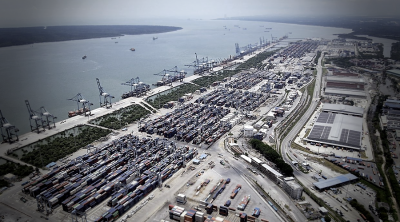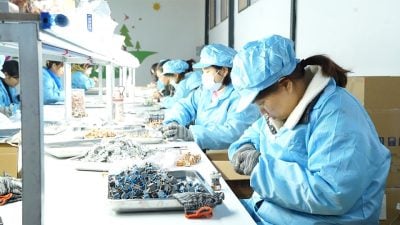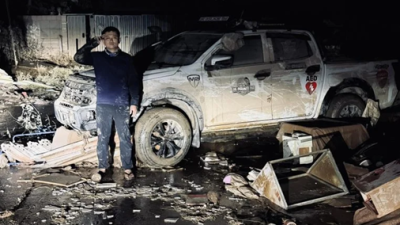
While grocery-shopping at a supermarket, I overheard a Malay man in his mid-forties asking the counter staff, “Sudah sampai ke?” (Has it arrived?) The counter staff replied, “Tak ada.” (No, it hasn’t).
Curious, I asked about the situation, and was told that for the last four weeks, the man had been asking for supply of beras tempatan, referring to our local rice, and that there was none from the supplier.
The manager confirmed that there had been none for the last one month.
Malaysia has been facing a significant shortage of locally produced rice, beras tempatan, our country’s staple food. This shortage has worsened over the past months, with supermarkets and sundry shops reporting an absence of local rice, forcing consumers to purchase more expensive imported rice.
The price disparity is alarming – a 10 kg bag of imported rice costs approximately RM38, while local rice, when available, costs RM28 for the same quantity.
This RM10 difference may seem small to some, but for the B40 (bottom 40 per cent income group), it is a substantial financial burden that exacerbates their already precarious economic situation.
This crisis raises critical questions about the role of rice producers and suppliers, and more importantly, how the government can step in to address the problem.
With food security being a vital issue in any country, particularly for its low-income population, the situation requires urgent intervention.
This article explores the root causes of the rice shortage and outlines potential steps the government can take to resolve the issue effectively.
Why rice shortage?
■ Supply Chain Disruptions: The rice supply chain, from farmers to wholesalers and retailers, has been disrupted over the past year.
These disruptions could be attributed to various factors, including inefficient distribution networks, hoarding by suppliers, or deliberate manipulation of supply by certain stakeholders to inflate prices.
Any interruption in this critical supply chain, whether intentional or due to inefficiencies, has a direct impact on the availability of rice in local markets.
■ Weather and agricultural challenges: Climate change and erratic weather patterns, like floods, droughts, or unpredictable monsoon seasons can lead to the reduction of yield and production in paddy fields, therefore limiting the supply of local rice.
Farmers, especially small-scale ones, are vulnerable to these environmental changes, and without proper support, their output can easily dwindle.
■ Dependence on imported rice: With the current shortage of local rice, consumers have no option but to turn to more costly imported varieties.
Malaysia’s dependence on imported rice has grown over the years as local rice production has not been able to meet rising demand.
This reliance leaves the country exposed to fluctuating international market prices, further contributing to the rising cost of rice for the average consumer.
■ Lack of incentives for local farmers: The government’s weak support in terms of subsidies, training and access to modern farming technologies for local rice farmers has been insufficient, resulting in many local farmers having to struggle with low productivity, which in turn diminishes the supply of local rice in the market.
This, combined with middlemen exploiting the situation, leaves consumers with fewer options.
■ Hoarding and manipulation by suppliers: There are concerns that certain producers and suppliers may be hoarding rice supplies or deliberately reducing the availability of local rice to drive up prices.
Such practices not only undermine food security but also put additional pressure on the low-income population, who is forced to pay higher prices for basic necessities like rice.
■ How the government can address the shortage: The rice shortage is a complex issue that requires a multi-faceted approach.
The government must take decisive action to address the root causes of the crisis while also implementing immediate measures to ease the burden on the affected population.
Here are several solutions that could help alleviate the problem:
• Strengthen Supply Chain Oversight
The Ministry of Domestic Trade and Consumer Affairs (KPDNHEP) could implement a digital tracking system for rice distribution across the country.
Use blockchain technology to track rice from the farm to the supermarket, ensuring that all parties involved, from farmers to wholesalers, are accountable.
Conduct regular audits to monitor stock levels, identifying instances where producers or suppliers may be hoarding rice to manipulate prices.
Impose penalties on businesses found guilty of such practices. Charge the culprits and shame them in the courts.
• Subsidise local rice production
The Thai and Vietnamese governments respectively have introduced subsidy programs for rice farmers. Malaysia can have a similar approach by providing subsidies for fertilisers, seeds, and modern equipment like mechanical harvesters.
For instance, the government can offer bigger financial support to farmers who adopt new high-yield rice varieties such as “MR297” developed by the Malaysian Agricultural Research and Development Institute (MARDI).
This would boost yields, allowing more affordable local rice to be produced, thus keeping prices lower.
Also, incentivise research into improving rice production; collaborate with universities like University Putra Malaysia (UPM) to develop more drought-resistant or flood-tolerant rice strains that could help mitigate the effects of climate change.
• Encourage self-sufficiency in rice production
Indonesia’s “Upscaling Paddy Production Program” sees the government expanding their rice farming areas by reclaiming idle lands and providing incentives to encourage rice farming.
Malaysia can learn from their neighbour. Convert unused land areas in states like Kedah, the “Rice Bowl of Malaysia”, into productive paddy fields.
Complement this effort with offers of grants and low-interest loans to new farmers, and provide them with the resources they need to establish and sustain paddy-farming operations.
• Introduce price controls and buffer stocks
Price controls were effectively used in India during the Covid-19 pandemic when rice prices spiked due to supply chain disruptions.
Malaysia can take a similar approach by setting a price ceiling on local rice to ensure it remains affordable for consumers.
For instance, set a temporary price ceiling of RM25 for a 10 kg bag of imported rice while local rice is gradually reintroduced into the market.
Japan maintains a reserve of essential food items, including rice, to release during shortages. Malaysia can establish a rice buffer stock policy similar to their Asian neighbour.
Malaysia could stockpile rice, sourced both domestically and from neighbouring countries, to be released when market supply is low.
This buffer would help stabilise prices during times of crisis.
• Expand social safety nets for the B40 group
In Brazil, the “Bolsa Família” program provides cash transfers to low-income families for essential food items. Malaysia can implement similar initiatives to help the B40 group cope with rising rice prices.
Introduce a temporary “Rice Assistance Program” that distributes vouchers for discounted or free rice to households earning below a certain income threshold.
Collaborate with local supermarkets such as Mydin or Giant, where B40 families could redeem these vouchers for discounted local rice or other staple foods.
Offer direct rice donations through government food distribution centres in low-income communities.
• Engage and collaborate with stakeholders
The Philippines Department of Agriculture organised consultations with rice producers, traders and retailers to address rice pricing and supply issues.
Similarly, Malaysia could convene regular dialogue sessions with stakeholders, including rice farmers, wholesalers, importers and retailers to address the rice shortage.
This collaborative approach could lead to the establishment of a National Rice Council (NRC) that brings all relevant stakeholders together to ensure a coordinated response to rice production and distribution issues.
By fostering closer communication, the government could develop more practical, ground-level solutions to prevent future rice shortages.
• Thailand’s rice pledging scheme
The Thai government implemented a scheme where they bought rice from farmers at above-market prices to ensure stable income for farmers.
While this policy had mixed outcomes, it ensured a steady supply of rice in domestic markets during certain periods of high demand.
• Vietnam’s government support for rice farmers
Vietnam provides low-interest loans to rice farmers and invests heavily in irrigation infrastructure, which has turned the country into one of the top rice exporters in the world.
Malaysia could emulate this by modernising its paddy-farming infrastructure, particularly in rice-producing states like Perlis, Kedah and Kelantan.
Remove the dangerous middle man. Ensure the NRC has complete control of the flow of rice from farm to fork.
• India’s public distribution system (PDS)
India operates a large-scale public distribution system that provides subsidised food grains, including rice, to low-income households.
Malaysia can implement a similar system through existing welfare programs like Bantuan Prihatin Nasional to ensure that vulnerable populations have access to affordable rice during shortages.
The shortage of local rice in Malaysia is a pressing issue that disproportionately affects low-income families.
Without urgent government intervention, the situation will only worsen, leaving the most vulnerable segments of the population to bear the brunt of rising food costs.
By strengthening supply chain oversight, supporting local farmers, and reducing dependence on imported rice, the government can mitigate the effects of this crisis.
Additionally, immediate relief measures for the B40 group will ensure that they are not left behind during this challenging period.
Ultimately, ensuring a stable supply of affordable local rice is not just an economic priority, but a moral obligation to protect the well-being of all Malaysians.

(Ravindran Raman Kutty is an active social worker.)
ADVERTISEMENT
ADVERTISEMENT








































